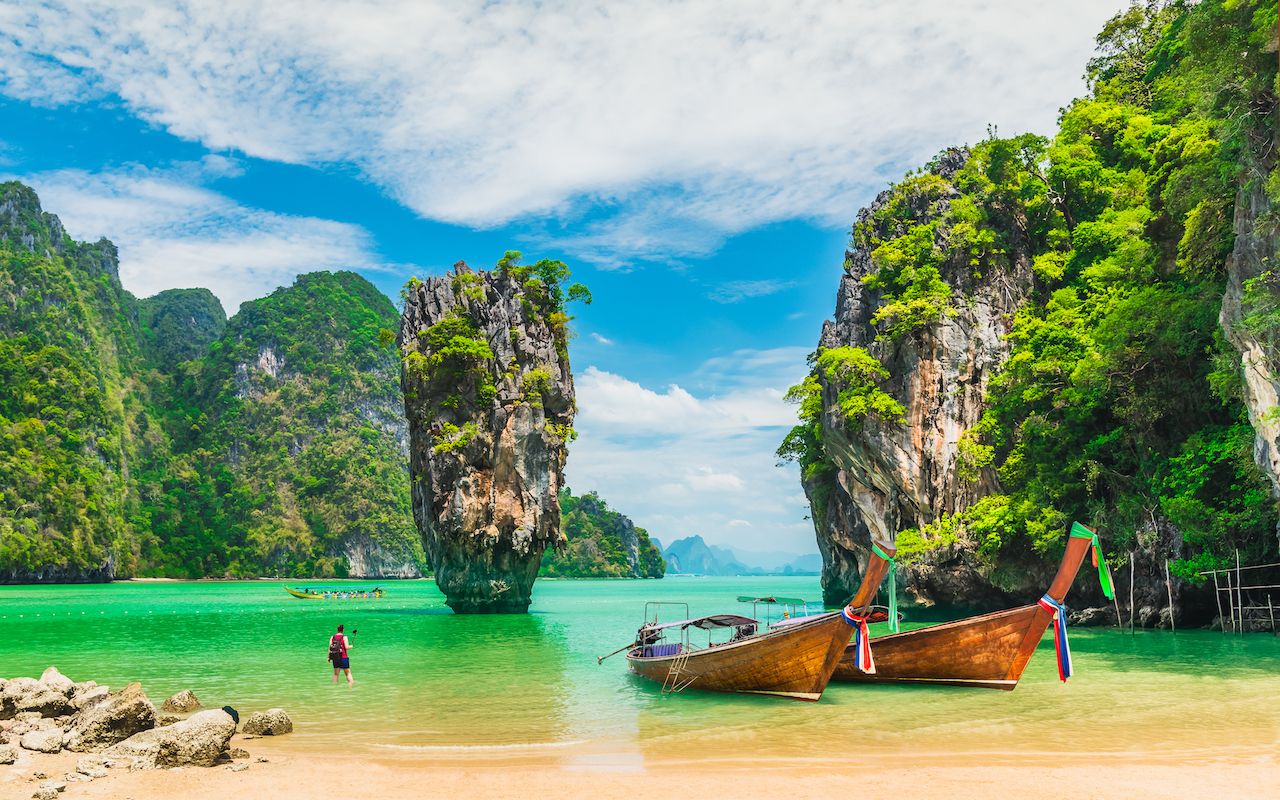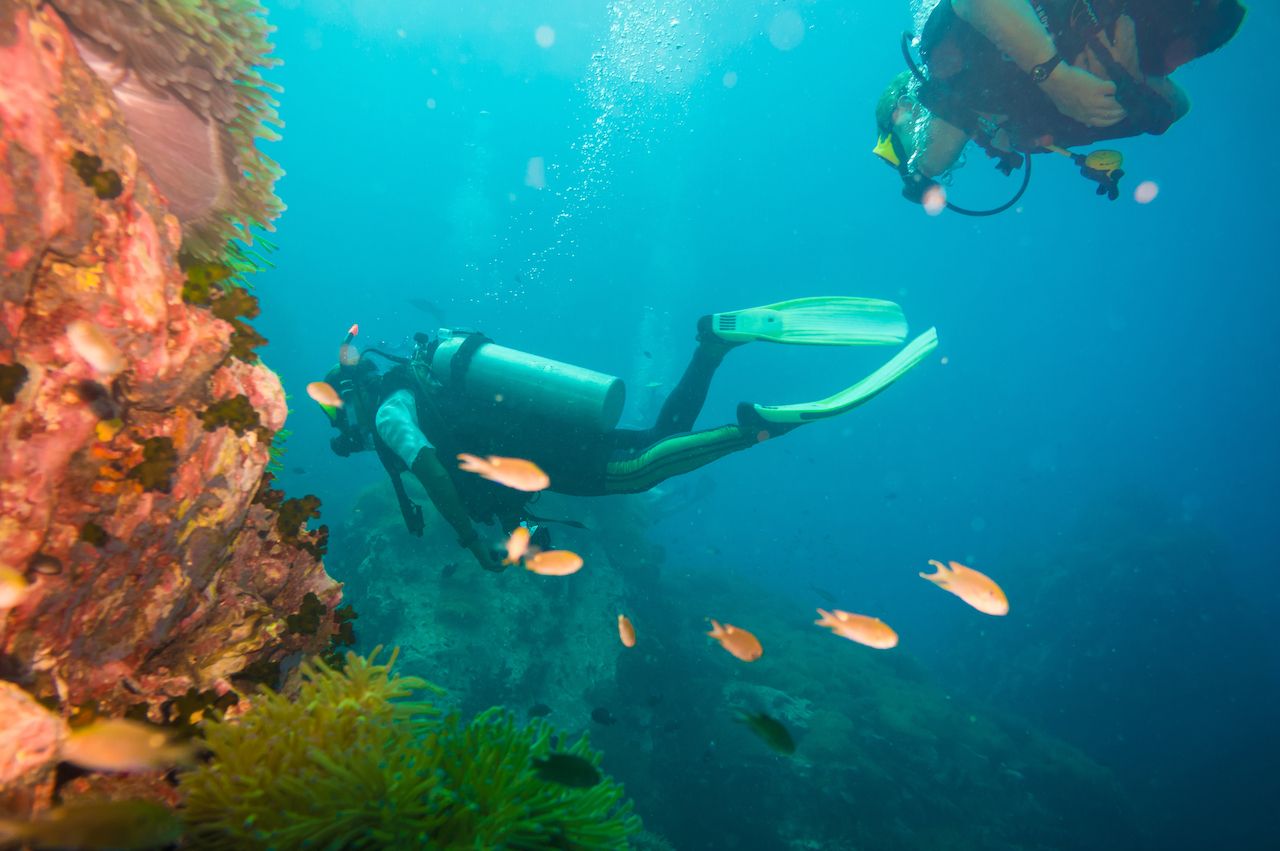Thailand has begun opening its international border for overseas tourists once again, with some of its most famed island hotspots first on the list. In July, the islands of Phuket and Koh Samui launched travel projects known as the “Sandbox Program,” allowing entry to fully vaccinated travelers without quarantine. As part of Surat Thani province, this includes Koh Tao, a popular diving island, and Koh Phangan, renowned for its beach parties, in Samui’s reopening. Visitors from at least 69 countries and territories are eligible, including the United States, Canada, and the United Kingdom. After the COVID19 pandemic halted international travel, visiting places like Thailand became a dream. Now you can experience its turquoise blue waters and white sand beaches. But there’s a catch.

Thailand’s Hotspot Islands Are Open to Visitors. Here’s How to Visit.
How to enter Thailand’s islands right now

Photo: Sorbis/Shutterstock
The gradual reopening is part of a wider strategy from the Thai government to reopen its borders to fully vaccinated visitors without quarantine by mid-October and improve its ailing tourism economy. Yet, this comes as the country is experiencing its third wave of virus cases, with at least 17,000 new virus cases a day and over a hundred deaths in recent weeks. Approximately six percent of the population have been fully vaccinated, far below the levels of many western countries.
Because of this, getting into the country as a traveler means you must follow a strict set of guidelines. While Thailand’s mind-blowing islands await, entering the country admittedly isn’t as easy as it used to be. First, you have to be fully vaccinated against COVID-19 if you want to experience either of the Phuket and Koh Samui reopening projects and be able to prove it at least with a vaccine card. You’ll also need to book return flights and COVID-19 insurance with coverage of $100,000. More information on the insurance and purchase options are available via the Thai Embassy website. An average US traveler visiting Thailand for 30 days can expect to pay about $130 for this insurance. Furthermore, you will need to provide a negative PCR test 72 hours before arrival and obtain a Certificate of Entry (COE) by filling out this form provided by the Thai government.
Once in the country, it is mandatory to stay at a government-approved Safety Health Administration (SHA) hotel. Sorry budget travelers, hostels and guesthouses aren’t available for your initial stay, but the government has made it easy to browse and view applicable hotels via its official portal. Thailand’s tourism authority also published a list of hotels in Koh Samui that are open to travelers.
You must also test negative for COVID-19 at least three times over 14 days before leaving the islands to ventures elsewhere in Thailand. The Phuket Sandbox program allows you to travel throughout the island once you’ve provided your first negative test upon arrival. But for those staying in Koh Samui, you must stay within designated areas for the first seven nights, although some tours are available so you can at least get out of the hotel and do some sightseeing. Travelers then have the choice to hop on over and stay in Koh Phangan or Koh Tao for the remaining seven days.
What to do on Phuket and Koh Samui

Photo: Day2505/Shutterstock
Now that official business is covered, let’s look at what there is to do now on the Thai islands. Phuket is the easiest to visit even in normal times and a destination that suits all types of travelers year-round. With its sizzling beaches, verdant green scenery, modern shopping malls, and pulsating nightlife, the island has a bit of everything. So much so that the Thai government made it the number one priority for its reopening plan, and so far, it’s been a success. There have been over 12,000 arrivals since July 1, and nearly 300,000 bookings made through the end of September as of this writing.
The main thing to do in Phuket right now is hit the beach and markets. Not everything is open, but you can swim at Patong Beach, visit Big Buddha or eat tantalizing Thai cuisine at one of the island’s many markets. See this full list of information on the Phuket Sandbox Program.
Koh Samui is Thailand’s second-biggest island and a popular hotspot for ex-pats and visitors alike. The jaw-dropping limestone rocks of Ang Thong National Marine Park haven’t gone anywhere and remain surrounded by blissful blue sea — with far fewer people there to witness the spectacle. Chaweng Beach isn’t busy as it once was but still equally beautiful. And if you want something more rustic, those working at Fishermans Village will be happy to see you, from the beachside restaurants to street vendor sellers. Thailand’s Tourism Authority released this list of guidelines for visiting Koh Samui.
What to do on Koh Tao right now

Photo: Makhh/Shutterstock
If you end up visiting the popular scuba dive island of Koh Tao, you’ll have ample opportunity to see what lies beneath its sky-blue waters. Koh Tao has always been a community-led island, but with international tourism closed for over a year, like other Thai islands, businesses have suffered. Nicky Simmons, who runs the Summer Guesthouse on the island, said the atmosphere is quieter, though she hopes new arrivals are coming soon.
“We hope for new visitors to the island — businesses need it to survive — it’s been very hard for a lot of people. We rely primarily on tourism as an island,” Simmons says. “You can get amazing deals on seriously good food — a lot of cheap Thai food and 100-baht deals on tasty western options.”
What to do on Koh Phangan right now

Photo: Dmitry Zimin/Shutterstock
Pre-pandemic, Koh Phangan was known for one thing: the Full Moon Party. But today, gone are the thousands of drunken revelers who would embark on Haad Rin beach to listen to cheesy techno and bump into one another while covered in fluorescent paint. Today Haad Rin, like many beaches in Thailand, has benefited from a natural reset. Even the water is sky-blue, something unbeknown to be many visitors over the years.
The village of Baan Tai still enjoys those visitor vibes, with foreigners riding on scooters sun-kissed from relaxing on the beach all day. In fact, night markets, stores, massage parlors, and bars remain open, unlike the strict lockdown that currently overwhelms other provinces in Thailand.
In the heart of Thong Sala on Soi Krung Thai, restaurant bars are still open, including the European-styled tapas joint, The Winery. For glitzy lights and vintage vibes, Baan Tai’s Night Market Café Vintage offers a handful of outside eateries open during the afternoon, serving everything from pizza to crepes to beer.
David Deveaux, a French ex-pat living on the island, runs Piz n’ Salads eatery. He said there is a digital nomad lifestyle present today in Koh Phangan, and those based there are happy to be in “paradise.” But like other business owners, he hopes for new international arrivals and the proposed lifting of even more restrictions this fall.
“If people can come it’s cool, but if it’s too difficult with all this process, quarantine, hopefully in October things will change,” Deveaux said.